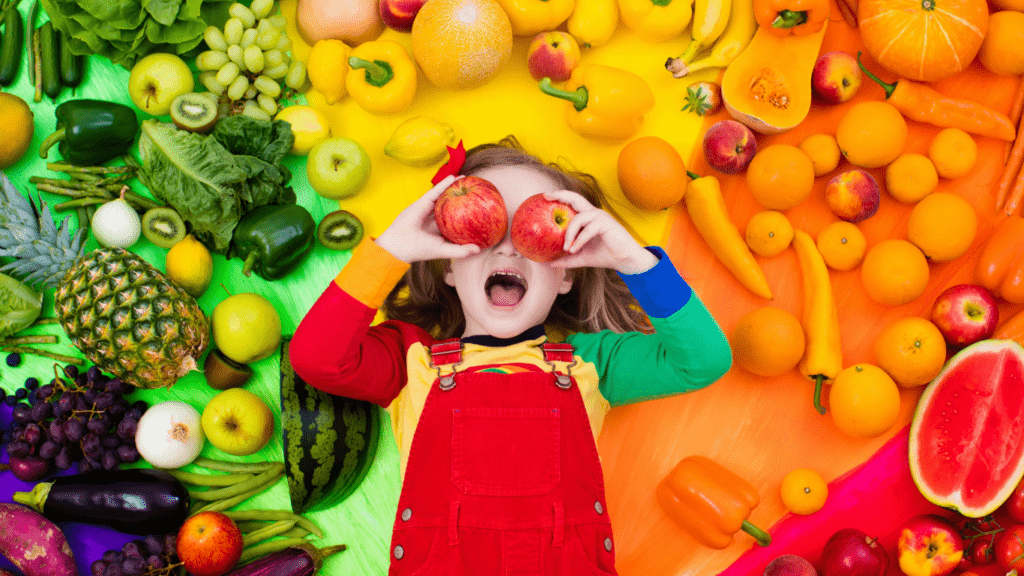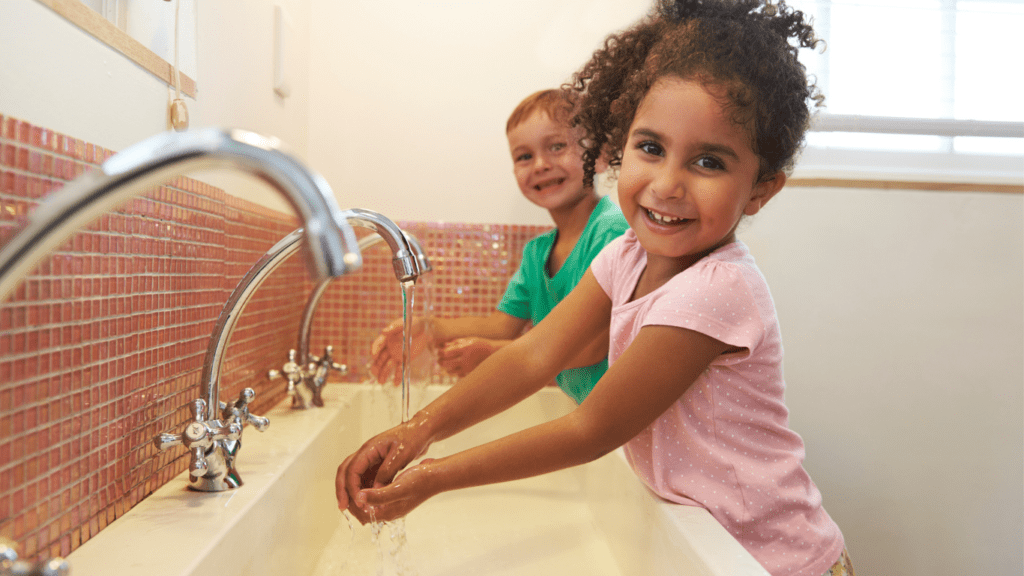Teaching kids about health doesn’t have to feel like a chore. In fact, it can be an exciting journey filled with fun and engaging activities that spark their curiosity. I’ve found that when kids enjoy what they’re doing, they’re more likely to absorb the lessons and carry them into their daily lives.
Why Teaching Kids About Health Is Important
- Teaching kids about health builds foundational habits they carry into adulthood. Early education on nutrition, hygiene, and physical activity promotes long-term well-being and reduces the risk of preventable diseases like diabetes or obesity. When children understand the benefits of healthy choices, they’re more likely to adopt those practices consistently.
- Health education boosts self-awareness and decision-making skills. Kids learn to identify their needs, whether it’s recognizing hunger cues, choosing balanced meals, or knowing when to rest. This empowerment helps them take responsibility for their physical and mental health over time.
- Understanding health also enhances social interactions. Kids who grasp the importance of hygiene and safe habits (e.g., handwashing, covering coughs) contribute to healthier environments for their peers. These lessons cultivate respect for collective well-being while benefiting individual wellness.
- Introducing health topics in engaging ways enhances comprehension. When kids enjoy learning, they retain ideas like the importance of hydration or the need for regular exercise. Positive experiences encourage them to apply these lessons in real life.
Fun Activities To Teach Healthy Eating
Engaging kids in interactive activities introduces them to healthy eating habits while making the process enjoyable. Practical, hands-on experiences can deepen their understanding of nutrition.
Exploring Fresh Fruits And Vegetables
Introducing kids to fresh fruits and vegetables helps them recognize their variety and nutritional value. I encourage kids to explore colors, shapes, and textures by sorting and naming produce like apples, carrots, and broccoli. Organizing a “taste test” activity fosters excitement, where kids rank fruits and vegetables based on flavor. To reinforce learning, I use printable food coloring sheets featuring these items, linking creativity to healthy eating.
Creating Balanced Meal Plates
Building balanced meal plates teaches the importance of proportion and variety in daily meals. I guide kids to construct plates using models of food categories like grains, proteins, fruits, vegetables, and dairy. Crafting these plates with real food or paper cutouts clarifies how each component supports their bodies. For example, kids can add spinach leaves for vegetables, chicken strips for protein, and orange slices for fruit. Visualizing this balance simplifies the concept of well-rounded nutrition.
Hosting A Healthy Snack Challenge
A healthy snack challenge motivates kids to make nutritious choices while fostering creativity. I set clear guidelines, such as using whole ingredients like nuts, yogurt, or berries, and let kids assemble their unique snacks. Kids can recreate ideas like fruit kabobs with melon and kiwi or yogurt parfaits layered with granola and strawberries. Awarding points for presentation and nutrition encourages innovation and reinforces the value of healthy snacking in everyday life.
Engaging Exercises For Active Lifestyles
Physical activity helps kids develop strong muscles, maintain a healthy weight, and improve mental health. Making exercise enjoyable encourages lifelong healthy habits and keeps children energized while they learn about the benefits of staying active.
Dance Parties For Fitness
I find dance parties an excellent way to combine movement with creativity. Play energetic music and encourage kids to freestyle or follow simple dance routines. Rotating song genres keeps sessions exciting, and incorporating movement challenges, like balancing or clapping, adds variety. For example, creating themed dance sessions, like “Animal Moves,” where kids mimic animals, makes fitness both engaging and educational.
Outdoor Obstacle Courses
Designing obstacle courses promotes physical strength and coordination. Set up simple stations, like jumping over cones, crawling under ropes, or balancing on a beam. Adding timed challenges keeps kids motivated to improve. For younger children, I include tasks like bean bag tosses or hopscotch to focus on motor skills. These courses provide opportunities to teach teamwork by having kids complete tasks in pairs or groups.
Simple Yoga For Kids
Yoga helps children develop:
- flexibility
- balance
- focus
Choose beginner-friendly poses like tree pose, cat-cow, or downward dog. Narrating the poses with fun themes, like pretending to be a tree or a cat, keeps kids engaged. I encourage deep breathing exercises to teach relaxation and mindfulness. Sessions can also include storytelling where poses align with the tale, making yoga both calming and imaginative.
Educational Games About Hygiene

Teaching hygiene through games engages kids while building essential habits. Fun activities make hygiene lessons both memorable and practical.
The Handwashing Race
I recommend turning handwashing into a timed challenge. Kids compete to lather and rinse thoroughly within 20 seconds, ensuring they reach every part of their hands. To start, I demonstrate proper handwashing steps, like scrubbing between fingers and under nails. Rewarding participants with stickers or applause adds excitement while reinforcing the importance of proper technique.
Germ Exploration With Glitter
Using glitter to simulate germs effectively teaches kids about cleanliness. I place a small amount of glitter on a child’s hand, representing how germs spread through touch. As they touch various objects, I encourage them to observe how the “germs” transfer. Afterward, I challenge them to remove the glitter using only soap and water, illustrating why thorough handwashing matters.
Encouraging Mental Health Awareness
Teaching kids about mental health through fun and engaging activities fosters emotional resilience and self-awareness. I integrate simple, meaningful exercises to help children understand and manage their feelings effectively.
Gratitude Journals For Kids
I encourage kids to create gratitude journals by writing or drawing three things they’re thankful for each day. This practice develops a positive mindset and teaches them to appreciate small joys. For example, children might include fun moments with friends, favorite meals, or achievements in school. To keep it exciting, I sometimes include prompts like “What made you smile today?” or “What’s the best thing about your family?” These exercises help kids focus on positivity and develop emotional awareness.
Relaxation Techniques Through Storytelling
Storytelling introduces relaxation techniques in a fun and accessible way. I use stories featuring characters who practice breathing exercises, progressive muscle relaxation, or mindfulness to manage stress. For instance, a story might describe a character blowing up a balloon to teach deep breathing or imagining peaceful beach waves to encourage visualization. During the story, I guide the kids to mimic the relaxation techniques to make the experience interactive and calming. This activity not only reduces stress but also equips children with tools to manage anxiety in real-life situations.
Tips For Parents And Educators
1. Set a Positive Example
Kids often mirror adult behaviors. I ensure they see me eating balanced meals, staying active, and maintaining hygiene. By modeling healthy habits, I reinforce their understanding and encourage them to adopt similar routines.
2. Integrate Health into Daily Conversations
I use everyday scenarios to talk about health topics. For example, I explain the benefits of fruits and vegetables during meals or discuss the importance of staying hydrated while drinking water. These casual talks make health education a natural part of their lives.
3. Encourage Questions and Curiosity
Creating a space where kids feel comfortable asking questions is crucial. If they ask why sleep is essential or how exercise benefits their body, I provide simple, science-based answers. This approach fosters learning and keeps them engaged.
4. Organize Group Activities
Group settings can make learning social and fun. I arrange outdoor games, cooking activities, or hygiene workshops where kids collaborate and learn together. These experiences build teamwork and reinforce health lessons.
5. Use Readily Available Resources
Books, videos, and apps designed for kids make health education entertaining. I choose age-appropriate tools that teach topics like nutrition, exercise, and mental well-being creatively. Integrating these resources keeps learning exciting and interactive.
6. Celebrate Small Achievements
Acknowledging progress motivates kids. Whether it’s trying a new vegetable, completing a physical challenge, or practicing mindfulness, I celebrate these moments with positive feedback. Rewards like stickers or extra playtime reinforce their efforts.
7. Adapt Lessons to Their Interests
Tailoring activities to what kids love boosts engagement. If they’re interested in art, I incorporate drawing healthy foods. For music lovers, I include songs about hygiene. These customizations ensure health education feels personal and enjoyable.





